
Blessed be, everyone. I found a really good article about the Autumn Equinox that I thought I would share with my readers. I hope you all enjoy it.
*******************************************************************************
*******************************************************************************
From "Autumn Equinox: The Enchantment of Mabon" by Ellen Dugan
The beginning of the autumn season officially commences in September with the Autumn Equinox. As the sun enters the astrological sign of Libra, the hours of dayand darkness are equal to one another, just like the balanced scales of Libra itself. From this point of the year, with each passing day, the daylight hours become noticeably shorter and the weather starts to cool. Autumn is a season of shadows and a time of wanlight, but it is also a season of abundance, thanksgiving, and harvest.
Ancient people realized the importance of the sun to life on earth. In the time after the equinox, the sun appears to be growing weaker, losing its battle against the darkness. To help the sun regain its former strength, people held harvest festivals of light featuring torches and bonfires as an act of sympathetic magick to encourage the sun to return.
Autumn has always been our colorful season of reward. As the sun began to decline and its yearly job was finished, the people gratefully gathered in the field crops. The grains from the fields, the fruit from the orchards, and the vegetables from the garden were harto be safely stored away for winter. Everyone in the community was involved in the harvest, as folks needed to make sure they could gather in their crops before they spoiled or were ruined by inclement weather.
At the end of the harvesting, the people were worn-out but happy and looked forward to a celebration. No matter where on earth the harvest is celebrated, from mid-August throughout the month of September, there is a basic and profound magick in the hearts of all people as they gather around with friends and family to feast and to celebrate the abundance of the earth.
Autumn Equinox or Mabon?
A Harvest Festival No Matter How You Look At It
The word equinox actually comes from the Latin word aequinoctium, which means "equal night." September, the seventh month of the Roman calendar, is taken from the Latin word "seven," septem. In Gaelic the month is identified as An Sultuine, the month of plenty. In Welsh it's called Medi, the month of reaping. The Anglo-Saxons called this month Gerst moanth, the barley month. Barley was thought to be the first grain grown in Britain.
One of the modern names for this autumn sabbat was taken from the Welsh god Mabon. The story of Mabon and his mother, Modron, is as follows: Mabon was taken from his mother as she slept when he was only three nights old. Modron's cries of anguish were so great that a search or quest commenced to find the missing child. At this point the story ties into the Arthurian legends as some of King Arthur's knights, or the king himself, take up the quest to find Modron's son. They eventually rely on the wisdom of the five wisest animals to help them: the blackbird, the stag, the owl, the eagle, and the salmon.
Eventually the child was discovered to be quite safe. He had been sleeping in his mother's womb or, depending on the version of the story, resting in the Underworld. In a plant analogy the child was resting just as a seed must rest beneath the earth before it can face the sunlight and brave the challenges of sprouting, growing, and flourishing. Now that Mabon's time had come, he was ready to face the world as God of Light and to be reborn as his mother's champion.
This mythology eventually became wrapped up and associated with the celebration of the Autumn Equinox. For many Wiccans and Pagans this is a bit of a puzzle. How did this sabbat end up with this name, anyway? I never really did come to a conclusive answer. But it sure does make me wonder . . . maybe that's why there are so many different titles and names for this particular sabbat today. However, no matter what name you call this sabbat, the Autumn Equinox is a magickal time of balance and plenty.
The majority of magickal traditions do celebrate this second harvest festival of the year as one of the fruits and the late grains. All around us signs are everywhere in nature, hintof the shortening days and cooler nights to come. The leaves are beginning to turn and the birds are beginning to migrate south. Apples and many varieties of squash are ripe and ready to be harvested, and the grapes that were harvested just a few weeks before, in late August-early September, begin to be processed into wine.
In modern times, when few of us are so intimately linked to the land, the enchanting autumn festival of harvest can be a time to reap what good deeds you've sown. And, no matter where you live, you can still feel that connection to the seasons as they change. On this day of the autumnal equinox, the sun will rise at true east and then it will set straight at true west. So if you ever wondered where the cardinal points were exactly, here's your big chance.
This is the perfect occasion to consider balance and harmony and how these forces are at work within your life. On this day, whether you call it the autumnal equinox or the sabbat of Mabon, this is your opportunity to celebrate the earth's bounty and gather in the fruits of your labors. This holiday is the Witch's Thanksgiving. So let's be thankful for all the blessings that we have.
Here are a few of the many mythologies, harvest festivals, and harvest customs from around the world. Take a look at these and notice how the common theme of the great Earth Mother is tied throughout them all.
Various Harvest Goddess Mythologies
Throughout the world, in many mythologies, a goddess of the grain, the harvest, and the good earth was venerated at the Autumn Equinox. This is not surprising, as the Earth itself is seen as a fertile mother, or Gaia. From this matriarch all life was born. She is a great mother goddess who was known by many names throughout time and in numerous cultures. Some of these names include Astarte and Ishtar (to the Sumerians), Isis in Egypt, Demeter in Greece, and Ceres in Rome. To the indigenous people of the Americas she was known as Old Woman Who Never Dies and the Mother of Maize.
The harvest mother, Demeter, was a Greek goddess of grain and the fertile earth. Her characteristic of being the "spirit of the grain" is well-known in many cultures as Mother Earth's child. This child was represented by the seeds that fell from the mother plant, which would then be planted for the following year. Demeter would be visualized as the ripe crop of this year while her daughter, Persephone, would be the seed taken from it to be sown the following spring.
The spirit of these future crops could be seen as a daughter, a maiden (such as Perseor as a divine child. In Russia the child was simply called the Corn Baby. In Egypt the spirit of the grain was the goddess's son, Horus. The Aztecs called the harvest goddess Chicomecoatl, while a goddess named Xilonen was Goddess of the New Corn. Her son was symbolized by the seeds and called the Spirit of the Corn. The Cherokees called the harvest child the Green Corn Girl.
In other parts of the world such as southern India, there is a harvest festival called PonThis is a rice festival that lasts for three days. On the first day folks thank the gods for the rain that blessed the earth and that granted them a successful harvest. The second day is spent honoring the warmth and light of the sun that helped the plants grow tall. The third day of the festival honors the cattle who have helped to plow the fields and to bring in the harvest. It is traditional to decorate the horns of the cattle with paint, ribbons, fruit, and f lowers. The child who came from this harvest mother was called the Rice Baby.
Harvest festivals are as plentiful as the crops produced in the counties in which they are grown. There are harvest festivals for corn, onions, pumpkins, apples, yams, grapes, hops, rice, barley, wheat, and sugar cane. In all parts of the world communities gather together to feast, to sing, and to dance as they celebrate the successful end of the growing season.
Looking on the happy Autumn-fields, And thinking of the days that are no more.
alfred, lord tennyson
Romancing the Harvest
Without a doubt the most frustrating aspect of researching this historical section was the general lack of information about Autumn Equinox customs. Some reference books claimed that in medieval Europe folks worshiped Demeter as a Corn Mother. Hold on a second . . . corn (or maize) is a native American plant, as in indigenous to the Americas. Did they even have corn in the Middle Ages in Europe? There was such a mishmash of information and customs tying into both the other harvest festivals of Lughnasadh (or Lammas) and Samhain that I began to wonder what in the world to do. I spent weeks trying to track down legitimate harvest custom information.
Many of the folk customs that modern magickal people insist are from the "ancient" celebration of the autumnal equinox, or what modern Witches call Mabon, were actually tied into the first major grain harvest of the region. At my best estimate that would have probably occurred in the month of August. Bummer . . . I needed something for mid- to late September, around equinox time.
Still, there was some information linking Autumn Equinox customs back to Harvest Home celebrations and, of course, to the Celtic festival of Samhain. There was a tempting thought-I could always take a look at the festivals when the first crops were brought in, at Lughnasadh, and the celebration of the third harvest, where everything was stored away in preparation for winter, at Samhain.
But what about what we know today as the Wiccan holiday that falls on the Autumn Equinox? The title "Mabon" is, quite honestly, a fairly new name for this harvest festival. So I searched a little harder but kept coming up with more conflicting information. I could literally feel the gray hairs popping right out of my head. And just to keep me on my toes, the harvest festival dates would vary widely, depending on the region of the world these festivals were celebrated in.
No wonder people think of this holiday as a forgotten sabbat! What about the grape or apple harvest, and what's up with all these references to Demeter as an ancient European corn goddess? There are even passages in the Golden Bough describing Demeter as holding "stalks of corn" and "ears of corn."Am I the only one who noticed that mistake?
You Call It Corn, We Call It Maize . . .
Demeter is safely known as a goddess of agriculture. But there are references to both Demeter and Ceres, her Roman counterpart, as corn mothers in the Greco-Roman period. Again, did the ancient Greeks and Romans grow corn as we know it today? Or was the whole thing a mistake caused by the Victorian time period, when folklore was considered fashionable and romantic? Or should I figure that it was a mistake caused by some well-meaning but overly idealistic writers from the 1970s, and that people kept running with the idea as holy writ? You know, the whole Oh, we've been celebrating this Pagan harvest festival of Mabon for hundreds of years type of thing.
While that's a lovely thought, it really doesn't have any historical proof to back it up. Then, when I found references to Isis as a corn mother, I knew I was in big trouble. Okay, no way did the ancient Egyptians grow corn. I could maybe imagine how the maize plant, what modern Americans call corn, might have had seeds shipped over to Europe in the 1700s or 1800s-that's not too much of a stretch. But corn grown in ancient Egypt? That I just couldn't buy. I knew I was missing something-something important. I found a clue as I looked through a book on medieval gardens and what was commonly planted in them. There was a heading under "corn." When I looked it up, it said "see wheat."
Excitedly, I f lipped back to the "W" section and looked at the entry for wheat. There I read that wheat was called "corn." Good grief. I slapped the book closed in frustration and tossed up my hands and . . . missed the forest for the trees. That afternoon, when my husband walked in the door, he made the huge mistake of asking how the research was coming. I gave him an earful. (No, that was not another corn reference, Goddess forbid.)
He listened to me rant and then suggested looking at the agricultural history of Britain-maybe corn was being sowed in the late 1700s, he speculated. He ought to know, he comes from a long line of farmers. We could both visualize that seeds might have been exchanged. If there were crops of American corn, or maize, being grown in Europe during the 1800s, that would go along with my Victorian romance of the harvest theory. All those references to cornhusk dollies and corn mothers were really driving me up the wall. So I searched the Internet and hit pay dirt.
The word corn once meant "a little particle of something such as a seed or a grain of wheat." Then I stumbled across the fact that in botany, the name corn is given to the leadcereal crop of any major region. In England, corn meant "wheat"; in Scotland and Ireland, corn was "oats." The grain called corn in the U.S. is properly or historically referred to as Indian corn, or maize.
No wonder all those books kept referring to Demeter and Ceres as the goddess of corn, for she was. Demeter was the goddess of whatever the main crop of the region hapto be. That made Isis and Ishtar goddesses of corn, too. The word corn was being used as a term, not as the name of the plant. Eureka!
Corn and grain, corn and grain, All that falls shall rise again . ..
wiccan harvest chant
John Barleycorn and the Lord of the Harvest
Now that I solved that problem, I figured I could take a fresh look at the harvest cusand the information that I could actually find. Since all of my information linked back into the two other harvest-theme sabbats, why not take another look at those? There are three harvest festivals in the Wiccan calendar and they are all connected. Well, we do love our trinities: three spring festivals, three harvest festivals, three faces of the goddess (Maiden, Mother, and Crone), and three aspects of the god (youth, a man in his prime, and the sage).
The harvest celebrations all embrace the idea of sacrifice; however, it is a symbolic saconly. The sacrifice is the one made by the spirit of the grain, sometimes known as John Barleycorn. There is a very popular old ballad for John Barleycorn. It's been remixed into songs and you may find many versions of this poem all over the Internet. It is often listed as "author unknown." However, it was actually written by Robert Burns and pubin 1782. Now you'll notice some variation on the spelling; if the words throw you, just say the word out loud and you'll figure it out.
It's sort of a gruesome ballad, but remember that what it is actually describing is the life span of the barley crops. We start with spring planting and then the summer growing season. Then it rolls into the hot days of late summer as the grain turns brown. Next comes the harvesting and then the process of threshing and grinding the grain. It does end with a twist, as the barley ends up becoming beer and the ballad has a toast to Scotall in one poem.
John Barleycorn
There was three kings into the east,
Three kings both great and high,
And they hae sworn a solemn oath
John Barleycorn should die.
They took a plough and plough'd him down, 9
Put clods upon his head,
And they hae sworn a solemn oath
John Barleycorn was dead.
But the cheerful Spring came kindly on,
And show'rs began to fall;
John Barleycorn got up again,
And sore surpris'd them all.
The sultry suns of Summer came,
And he grew thick and strong;
His head weel arm'd wi' pointed spears,
That no one should him wrong.
The sober Autumn enter'd mild,
When he grew wan and pale;
His bending joints and drooping head
Show'd he began to fail.
His colour sicken'd more and more,
He faded into age;
And then his enemies began
To show their deadly rage.
They've taen a weapon, long and sharp,
And cut him by the knee;
Then tied him fast upon a cart,
Like a rogue for forgerie.
They laid him down upon his back,
And cudgell'd him full sore;
They hung him up before the storm,
And turned him o'er and o'er.
They filled up a darksome pit
With water to the brim;
They heaved in John Barleycorn,
There let him sink or swim.
They laid him out upon the f loor,
To work him farther woe;
And still, as signs of life appear'd,
They toss'd him to and fro.
They wasted, o'er a scorching f lame,
The marrow of his bones;
But a miller us'd him worst of all,
For he crush'd him between two stones.
And they hae taen his very heart's blood,
And drank it round and round;
And still the more and more they drank,
Their joy did more abound.
John Barleycorn was a hero bold, Of noble enterprise;
For if you do but taste his blood, 'Twill make your courage rise.
'Twill make a man forget his woe;
'Twill heighten all his joy;
'Twill make the widow's heart to sing,
Tho' the tear were in her eye.
Then let us toast John Barleycorn,
Each man a glass in hand;
And may his great posterity
Ne'er fail in old Scotland!
The Sacrificial God
During the time of the harvest comes the realization that the summer, the season of the sun and full moon, is coming to an end. Autumn is taking over, and it's the season of the waning moon and the gathering darkness. All life, both plant and animal, is slowly drifting toward the dark and barren time of the winter, which begins at Samhain.
Just as the sun is overshadowed by the darkness, signified by the shortening days, the autumnal equinox falls on the day of balance, when light and dark hours are equal. Symat the Autumn Equinox the god goes to the Underworld as the corn king and Lord of the Harvest. He has been cut down and the grain absorbed back into the womb of the earth.
The symbolic sacrifice of the god at the sabbat of Autumn Equinox, or Mabon, is part of the fertilization process for the future spring planting season. For us today this is a time of cutting away what we no longer need or have moved beyond. There are a few variaof harvest customs from around the world that call the last sheaf standing in the fields the "old man." I wonder if this is a link to the sacrificial harvest king? Overall, the "old man" was treated much less gently than the corn mother or corn child, for here, in the spirit of the harvest, the god gives up his life at the harvest to feed his people.
As the final crops and fruits are collected, the god, represented by the weakening sun, returns to the earth to rest with the goddess until it is time for him to be reborn again. Sometimes this is referred to as the sun god going into the seed or being held within the grain. At harvest-tide, a time of incredible bounty spreads out across the land. The grains were full of the life and energy of the god, the earth mother rewarded us with her bounty, and finally the crops were all harvested. The fruits of the fields were gathered and then safely stored away.
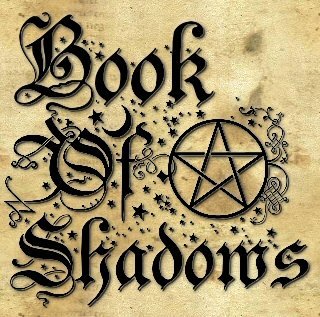





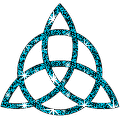
















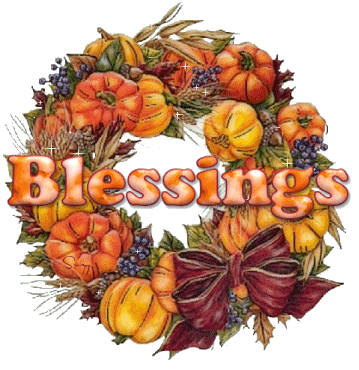
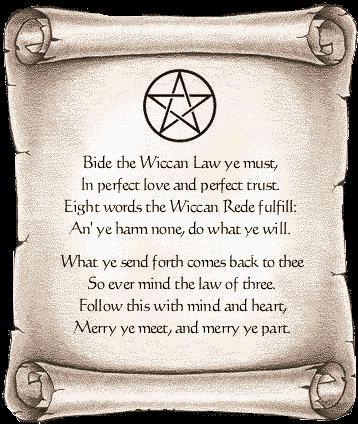









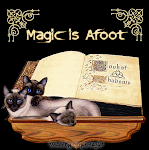


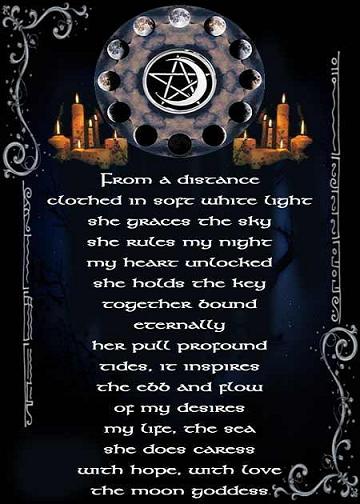




No comments:
Post a Comment